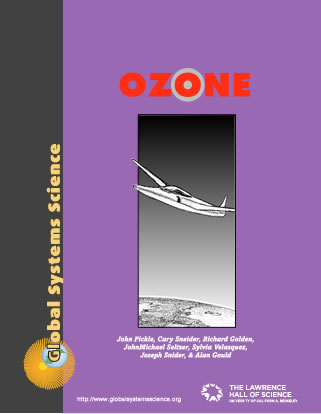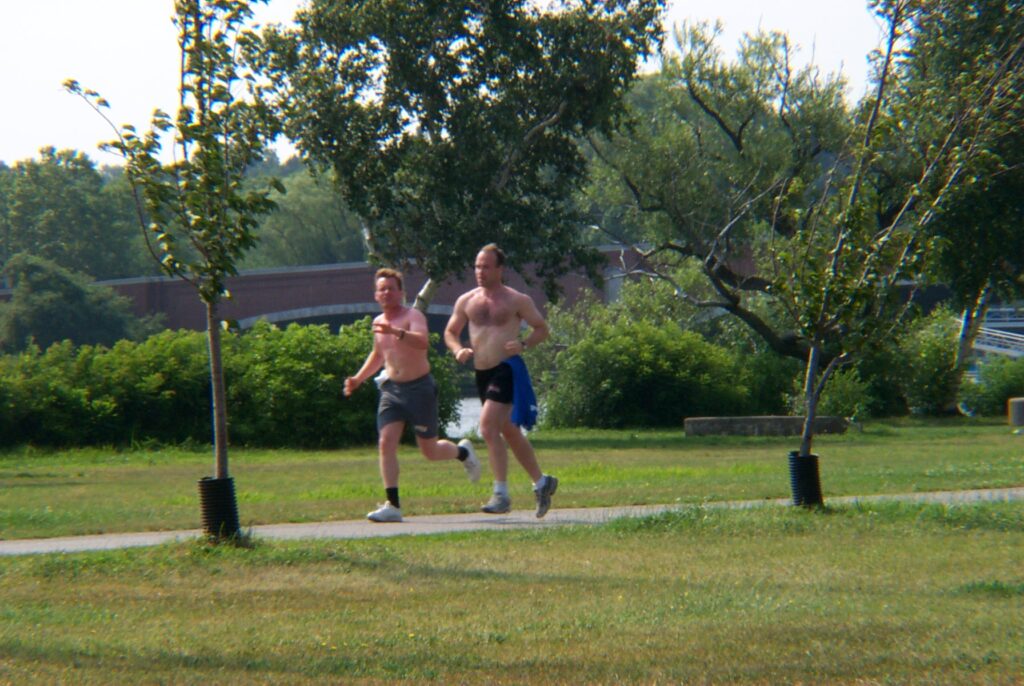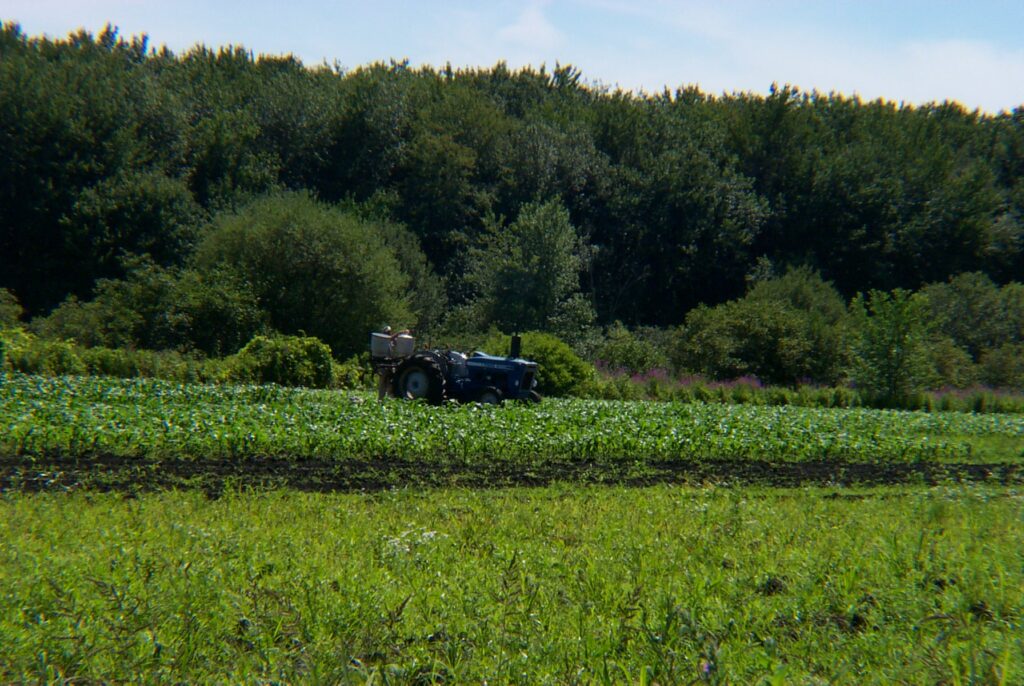OZ11. Hazards of Ozone in the Troposphere

Chapter 11
{ Ozone Contents }
There is another health problem resulting from changing levels of ozone in the atmosphere, but this involves increasing concentrations of ozone near the ground. Due to its highly reactive nature, breathing ozone is quite harmful. It affects your health and the environment.
I. Effects of Tropospheric Ozone On Health
Have you played a game outdoors during a long summer afternoon and end up coughing after a long run? This may be your body reacting to high ozone levels.
As industry became concentrated in cities, city dwellers experienced several catastrophic smog events that brought attention to the deadly nature of ozone. Although ozone is made up of only oxygen atoms, it doesn’t behave like the dioxygen molecules we need to breathe in order to survive. Ozone molecules combine more readily with other chemicals, most often oxidizing the chemicals they come in contact with, including molecules in the cell walls of the lungs, nose, and throat. As we breathe ozone, the mucous membranes of the nose and throat and the cells of the lungs become irritated, inflamed, and lose their ability to fight infection and remove fine particulate matter. Ozone hurts healthy people, but it particularly aggravates existing respiratory problems such as asthma, emphysema, and chronic bronchitis.
There are many variables to consider with air pollution, which makes identifying cause and effect more difficult. Some people, children in particular, are more susceptible to developing respiratory problems while breathing ozone pollution. The concentration of ozone, the amount of time, and how often you breathe ozone-polluted air are important factors that can create health problems. At higher concentrations, ozone can create permanent biochemical changes in the lungs, not just irritation and inflammation. Even at lower concentrations, the lungs may not recover completely from short-term damage if they are exposed to another episode of breathing polluted air. The longer you are exposed to ozone pollution, the more irritated the lungs become, and it takes longer to recover. Current research is being done to see if repeated short-term damage episodes leads to long-term problems for people living in areas with frequently elevated ozone concentrations.

OZ11.1. Investigation:
Measuring Lung Capacity
Design an experiment to investigate how even a low concentration of a gas such as ozone can create problems for living things.
II. Ozone Levels in Your Area
Since elevated ozone levels create a serious health problem in many parts of the country, the EPA and state and local air agencies have created several ways to inform the public of local ozone levels and their potential health effects. Two of the most common ways are the Air Quality Index (AQI) and maps of expected daily ozone concentrations.
As a result of the Clean Air Act, the EPA developed the AQI, to convey the levels of five common air pollutants (ground-level ozone, particulate matter, carbon monoxide, sulfur dioxide, and nitrogen dioxide) and their effects on health at those levels. There are more than one thousand monitoring sites located across the United States collecting hourly air quality measurements. Using this information, past observed trends, and computer models that forecast the weather, the EPA predicts the average pollutant concentrations over an 8-hour period (unless the 1-hour amount is over a certain limit), and converts these to a separate AQI for each of the five pollutants. The reported AQI issued for the day is the highest of the AQI values for the individual pollutants. The AQI ranges from 0 to 500 with 500 being the greatest expected health problems. Only the AQI based on ozone concentrations is shown in the chart below.
| AQI Code | Ozone Conc (ppb) | Color Code | Health Issue |
|---|---|---|---|
| 0-50 | 0-64 | Green | No Concerns |
| 51-100 | 65-84 | Yellow | Acceptable for all but most sensitive |
| 101-150 | 85-104 | Orange | Unhealthy for sensitive group |
| 151-200 | 105-124 | Red | Unhealthy |
| 201-300 | 125 (8 hr) to 404 (1 hr) | Purple | Very unhealthy |
| 301-500 | >404 (1 hr) | Maroon | Hazardous |
In addition to reporting AQI for a city or region, maps of AQI values or ozone concentrations converted to the AQI categories or colors are produced daily by the EPA. These maps show the timing and location of pollution build up throughout the day. The maps are available on local television or newspapers and from https://www.airnow.gov/
III. Avoiding Exposure to Ozone
In general, air found indoors has the same pollution constituents found outdoors. However, if the pollutant is emitted or formed only outdoors, such as ozone, the concentration found indoors is often lower due to the slow mixing with indoor air. Therefore, when ozone concentrations approach unhealthy levels in the afternoon, one recommendation is to remain indoors. If you must go outdoors, limit your physical exertion to decrease the amount of ozone you breath, since more physical activity means more frequent deep breaths, allowing more ozone to enter your lungs to react with sensitive cells.
Running outdoors during poor air quality defeats the health benefits of jogging.
(Photo by John Pickle.)

Physical activity is any activity that raises your pulse rate, such as yard work, construction, long walks, running, bicycling, and roller blading. Special care should be taken for young children, since their body size, breathing habits, and level of activity make them more sensitive to ozone pollution.
IV. Ozone and Plants
Scientists have been studying how ozone affects plants since the 1970s when it was found that ground-level ozone caused significant damage to plants. Currently, ozone causes more damage to plants than all other air pollutants combined. The cost of lost agricultural production in the United States from ozone pollution is $3 billion. Combine this with an estimated cost of $7 billion in added health care, and ozone pollution is quite expensive to our society.

Plants cannot escape the effects of air pollution.
Photo by John Pickle.
Ozone enters plant leaves through the tiny openings called stomata. Once inside the leaf, just as with our lungs, ozone begins to do its damage by oxidizing chemicals within the cells of the leaf. Ozone attacks the stomata, changing the ability of the plant to breathe, which decreases the rate of photosynthesis of the leaf. Portions of the leaf are destroyed, causing spotting, stippling, flecking, bronzing, and reddening. Ultimately, the rate of plant growth, flowering, and crop yields are significantly reduced and the plants are more susceptible to pathogens and pests.
Unfortunately, primary plant growth occurs during the time of year when ground-level ozone production reaches its seasonal peak during the hot, warm late-spring to early fall season. Two intensively farmed areas are particularly hard hit due to high ozone concentrations: southern California and the southeastern United States.
Unlike people, crops cannot be brought indoors when high ozone levels are forecast. Certain crops are quite sensitive to ozone damage (soybeans, clover, onions, spinach, muskmelon and alfalfa), and others more resistant. Research is underway to produce plants that can resist damage during high ozone-level events.
Question 11.1.
If you were in control of money for research but had to choose to do either research in development of plants resistant to ozone damage or development of fuels and power sources that are ozone free or extremely low in pollution emission, which type of research would you choose to fund? Why?
V. Ozone and Climate
We have seen how ozone in the stratosphere protects us from harmful UV light by absorbing it and preventing it from reaching the ground. We have seen how CFCs in the stratosphere destroy the ozone that shields us from harmful UV radiation. We have seen how ozone is also a dangerous pollutant at ground level in the troposphere.
Now, just to make matters even more complicated, ozone and CFCs also behave as greenhouse gases. Gases that are categorized as greenhouse gases tend to absorb infrared radiation emitted from the Earth’s surface, with the net effect of making the Earth retain heat. This could raise the temperature of Earth—a phenomenon called global warming. Although not as great a contributor to greenhouse effect as carbon dioxide and water vapor, the effects of ozone and CFCs on changing the global heat balance may be significant.
VI. Global Warming Potential
Global Warming Potential (GWP) is the index that rates the ability of a molecule of gas to change the balance between incoming solar radiation and outgoing infrared radiation as compared to that of a molecule of carbon dioxide.
The amount a greenhouse gas actually contributes to changing the heat balance of the Earth’s troposphere depends not only on its GWP, but also the amount of gas emitted into the atmosphere and the chemical lifetime of the gas in the atmosphere. Despite the relatively low concentration of CFCs in the atmosphere, the long lifetime of CFCs and large GWP make their contribution to global climate much larger.
Interestingly, although ozone has been identified as a greenhouse gas, it was not considered by the 1997 Kyoto Protocol because it is not directly emitted by human pollution. The chemistry of the highly reactive ozone gas is extremely complex, creating much uncertainty on efforts to measure and model its effects. Ozone has a very short lifetime in the lower atmosphere, minutes to hours. It reaches maximum concentrations at the time of day when warming is near a peak. This helps keep more of the infrared energy in the lower atmosphere when the Earth’s surface is warmest, producing even warmer temperatures. The effect of ozone on changing global warming is estimated to be one quarter to one third of that contributed by carbon dioxide since 1870; but since the chemistry is very complex and dynamic, research continues to accurately identify ozone’s contribution to the greenhouse effect and global warming.
Ozone’s effect on the greenhouse effect is quite complex. As stratospheric ozone is lost, the stratosphere cools, which causes a decrease in the amount of infrared radiation reaching the troposphere and the Earth’s surface. This decreased amount of infrared radiation reaching the Earth’s surface offsets as much as 30% of the change in greenhouse effect caused by increasing amounts of greenhouse gases in the troposphere. This complexity illustrates why scientists try not to make absolute declarations when dealing with the large, complicated systems in nature, even if global decisions must be made immediately. Rarely can all variables and components be considered, especially in early studies of a particular natural phenomenon.
Global Warming Potential (GWP) of Various Gases
| Gas | Lifetime (years) | GWP |
|---|---|---|
| Carbon dioxide | 100 but variable | 1 |
| Methane | 12.2 | 24 |
| N2O | 120 | 360 |
| Ozone | Minutes to Weeks in the Troposphere | Unknown |
| CFC-11 | 45 | 4,600 |
| CFC-12 | 100 | 10,600 |
| HFC-23 | 243 | 14,800 |
| HCF-125 | 32.6 | 3,800 |
| HFC-134a | 13.6 | 1,600 |
| HFC-1552a | 1.5 | 190 |
VII. Summary of Ozone in the Troposphere
Elevated concentrations of ozone in the troposphere began with the Industrial Revolution in the 1800s, where economies flourished through large-scale, mechanized production of goods. The increasing ground-level ozone has created numerous health problems, destroyed crops, and increased the Earth’s greenhouse gas levels. This highly reactive chemical forms in two ways, but both coming from chemicals that react with sunlight. Far above the Earth’s surface in the stratosphere, dioxygen produces ozone, creating a layer that protects us from the Sun’s deadly UV radiation. It also creates a stable cap to our troposphere, which affects our weather and climate. The second way that ozone is formed is near ground-level by UV light in chemical reactions with nitrous oxides and volatile organic compounds to produce ozone, the pollutant. This complex reaction has hindered our learning of the complete effects of ozone in the troposphere.
VIII. Questions About Technology
Think of your world, and ask if technology is always needed. Which technology is appropriate for which need? During the early days of space missions, a writing tool was needed that could write in weightless conditions. The American space program spent over a million dollars to invent a pen to meet that need. The Russian space program used existing technology to overcome the problem: a pencil.
Question 11.2.
Do we need every new aspect of technological development? Create a list of technology that is essential to your life. Create a second list of technology you feel is not needed. With each topic, state why it is or is not essential to you. Are there any topics that belong on both lists?
Question 11.3.
Does technology create the need for additional technology? For example, old computers often cannot use the newest software, so purchasing new computers becomes essential if you need to communicate with the growing computerized population. Think of the many areas technology has changed our lives, from medicine, transportation, entertainment and leisure, and consumerism. Create a list of technology aspects of your life, and for each topic, discuss whether you feel the technology was invented to fit a need or if the technology invented the need.
Question 11.4.
Can steps be added during the advancement of technology that will prevent some of the environmental problems? An example would be that for every new chemical that is created commercially, a safe, non-polluting method must be created to dispose of the material prior to production and use of the chemical. Could computers have been designed for recycling of parts and or components? Create a list of ideas you could use to make technology safer for the environment. For each idea, discuss whether the added cost outweighs the cost to society during eventual clean up of polluted environments?
Question 11.5.
We have seen chemicals as “good guys” and “bad guys” in different places. Make a chart like the one below and fill in the boxes with G = Good Guy and B = Bad Guy as appropriate.
| Chemical | Ground Level | Troposphere | Stratosphere |
|---|---|---|---|
| Dioxygen | |||
| CFCs | |||
| NOx | |||
| Ozone | |||
| Nitrogen | |||
| SO2 | |||
| CO2 |

